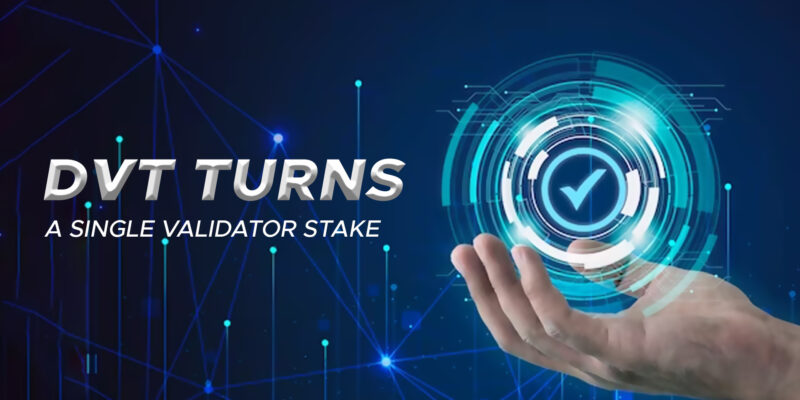- Validator nodes are essential for blockchain protection but can be expensive and complex to perform.
- Distributed Validator Technology (DVT) simplifies this by combining assets and turning a single stake into a group of nodes.
- DVT complements accessibility, lowers limitations on access, and automates maintenance for extra-efficient node operation.
Blockchain networks like Ethereum, Binance Smart Chain, and lots of others depend upon a decentralized network of validator nodes to verify transactions, create new blocks, and maintain the security and integrity of the network. These validator nodes are regularly operated by individuals or commodities with a massive stake in the network’s local cryptocurrency.
Challenges Of Running A Validator Node
While validator nodes play an important role in blockchain ecosystems, running one is not without its demanding situations. Here are a few unremarkable problems faced by validator node operators:
- High Costs
Setting up and keeping a validator node calls for good-sized computational sources, including powerful servers and a dependable net connection. These sources may be steeply-priced.
- Complexity
Configuring and dealing with a validator node can be complex, especially for people new to blockchain generation. Ensuring that the node operates effectively and securely is not a responsible challenge.
- Downtime Risk
Validator nodes need to be online and operational 24/7. Downtime can result in penalties, including the slashing of staked assets.
DVT: Turning A Single Stake Right Into A Cluster Of Nodes
DVT, or Distributed Validator Technology, is an answer designed to manage those challenges and make validator node operation more extraordinary and efficient. Here’s how DVT achieves this:
- Shared Resources
DVT allows a couple of customers to pool their assets and stake together to run a validator node. This shared staking pool will increase the general stake, making it much more likely for the validator node to be selected to create new blocks and validate transactions.
- Load Balancing
DVT employs load-balancing techniques to distribute the workload through multiple servers or nodes within the group. This ensures that no available server is beaten with computational responsibilities, decreasing the risk of downtime due to aid conditions.
- Automated Maintenance
DVT automates the various protection duties related to stepping into a validator node. This consists of updates, protection patches, and failover mechanisms to ensure uninterrupted operation.
- Lower Costs
By sharing the costs of infrastructure and resources, users can participate in validator node operation with a decrease in the usual financial dedication. This opens up validator node participation to a broader audience.
Benefits Of DVT For The Blockchain Ecosystem
DVT brings several advantages to the blockchain atmosphere:
- Enhanced Security
By distributing the workload across more than one node, DVT reduces the risk of a general point of failure. This completes the safety and dependability of the validator node cluster.
- Increased Accessibility
DVT makes validator node operation more convenient for a wider variety of participants. This decentralizes the network similarly and promotes extra participation and decentralization.
- Lower Barriers to Entry
The decreased fee and complexity associated with DVT inspire extra people and commodities to emerge as validator node operators. This can result in an extremely resilient community.
- Efficiency and Scalability
DVT’s load-balancing talents make sure that the validator node group operates effectively, even through periods of excessive community pastime. This scalability is crucial for blockchain networks experiencing a boom.
- Automated Management
DVT’s automation features simplify the management of validator nodes, decreasing the need for regular guide intervention.
Conclusion
Validator nodes are the backbone of blockchain networks, and technology like DVT is instrumental in expanding their participation. By decreasing charges, complexity, and boundaries to entry, DVT empowers a broader community of users to contribute to the safety and decentralization of blockchain ecosystems. As the blockchain era continues to adjust and gain traction, solutions like DVT play a critical role in ensuring the stability and accessibility of these networks.


Comments